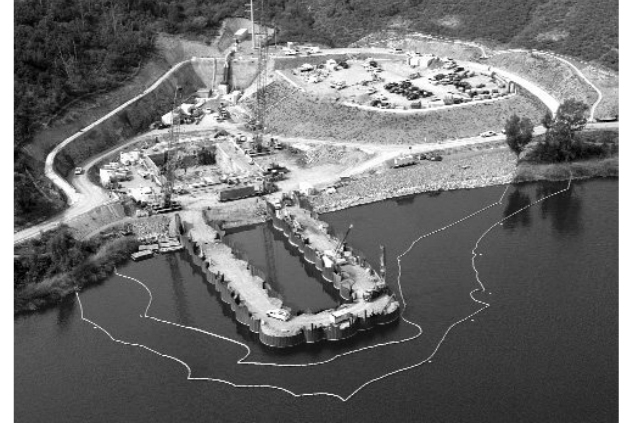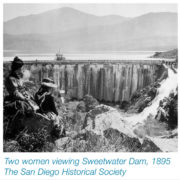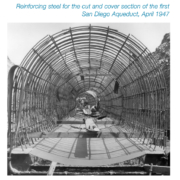 Pipelines from Lake Hodges to the Olivenhain Reservoir helps generate electricity and gives the San Diego County Water Authority the ability to store 20,000 acre feet of emergency water supplies at Lake Hodges when the entire project is finished. Photo: SDCWA
Pipelines from Lake Hodges to the Olivenhain Reservoir helps generate electricity and gives the San Diego County Water Authority the ability to store 20,000 acre feet of emergency water supplies at Lake Hodges when the entire project is finished. Photo: SDCWA2012: Lake Hodges Projects
While looking for ways to optimize the San Diego region’s water supply, San Diego County Water Authority engineers realized the potential to link the new Olivenhain Reservoir with the existing Lake Hodges just to its east. Not only would connecting the lakes by a pipeline facilitate movemnt of Lake Hodges’ water through the regional distribution system, but the Water Authority could capitalize on a rare opportunity to generate electricity.
The resulting pipeline rises 770 feet from Lake Hodges to the Olivenhain Reservoir. Moving water uphill requires two 28,000-horsepower pumps sitting 10 stories underground. When water flows downhill through the same pipeline, it generates up to 40 megawatts of electricity, enough for 28,000 homes. The Water Authority generates power during the day when energy prices are highest. It pumps water back uphill at night when energy costs are lower, creating revenue in the process.
Completed in 2012, the Lake Hodges Projects facilities allow water stored in lake Hodges to be delivered to the Twin Oaks Valley Water Treatment Plant prior to distribution to a majority of the county. This also gives the Water Authority the ability to store 20,000 acre-feet of emergency water at Lake Hodges when the entire Emergency Storage Project is finished.




